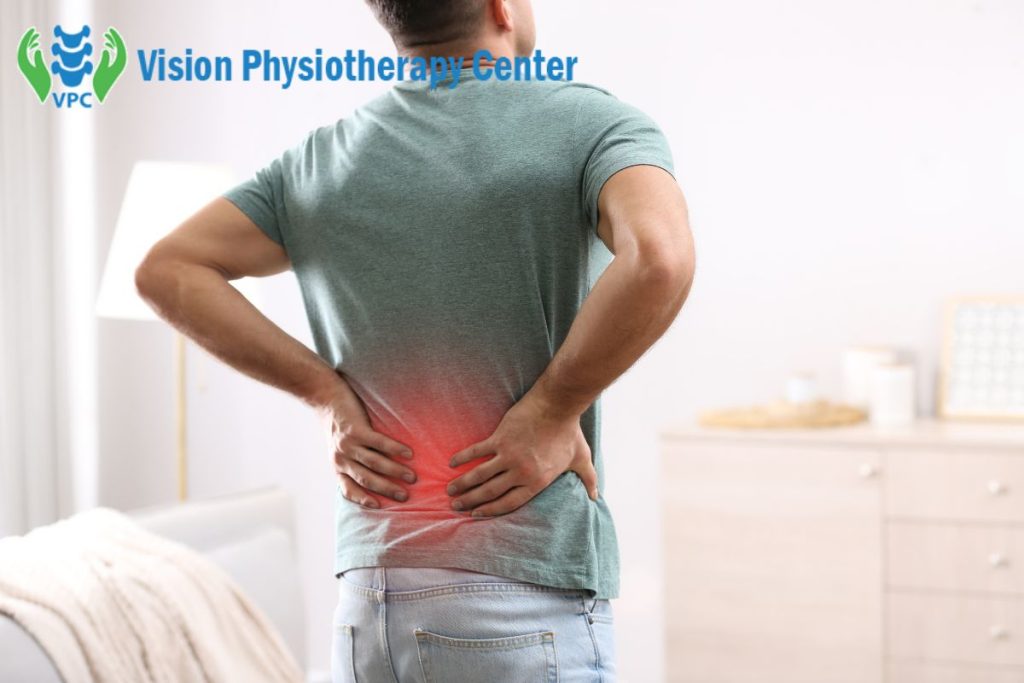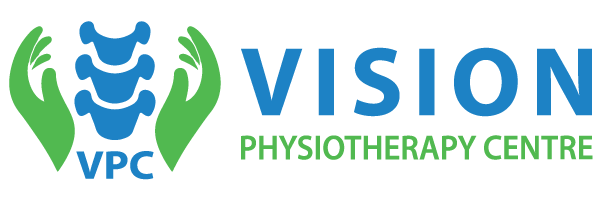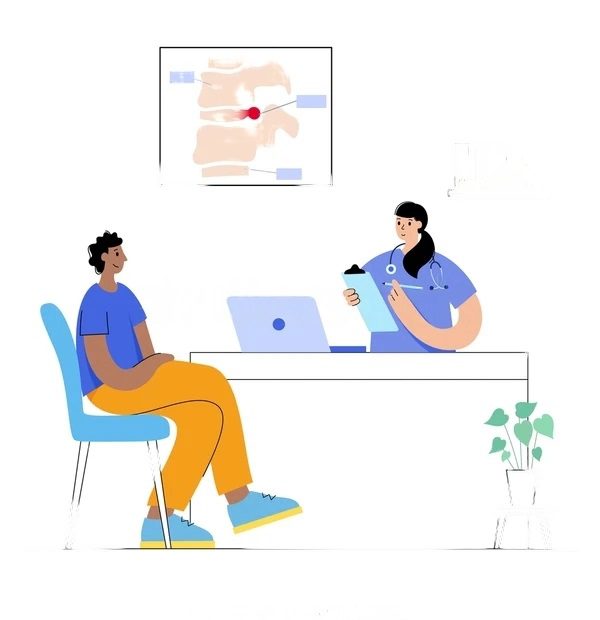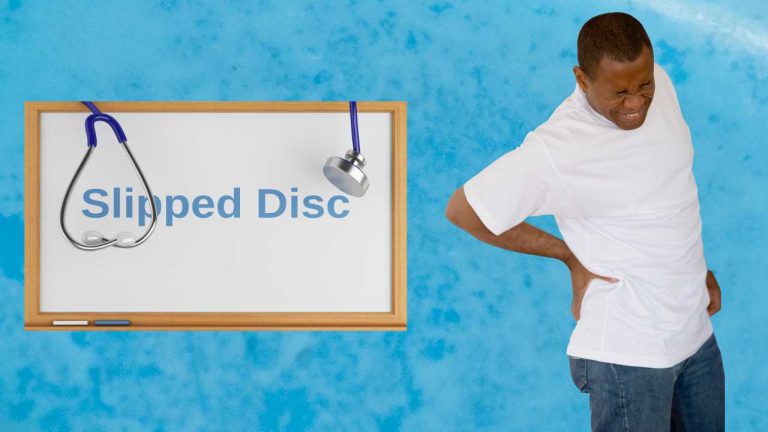Introduction
Prolapsed lumbar intervertebral disc (PLID) disease, also known as a slipped or herniated disc, is a medical condition that affects the lumbar spine. The lumbar spine consists of five vertebrae, and between each vertebra lies a cushion-like structure called an intervertebral disc. When the soft inner portion of the disc protrudes through the tougher outer layer, it is referred to as a prolapsed lumbar intervertebral disc.
What is PLID disease, is important as it is a common cause of low back pain and can have a significant impact on a person’s quality of life. It is important to know the symptoms, diagnosis of lumbar, and treatment options for PLID to ensure early detection and proper management of the condition.
Also, Lumbosacral pain caused by a prolapsed lumbar intervertebral disc can often be treated with a lumbar discectomy.
We describe what is PLID disease, including its anatomy, symptoms, diagnosis, and treatment options. Additionally, the article will discuss preventive measures, coping strategies, and support groups for those living with PLID.
Anatomy of the Lumbar Spine
The lumbar spine is the lower back portion of the spine, consisting of five vertebrae labeled L1 to L5. These vertebrae are the largest in the spine, and they provide support for the upper body and protect the spinal cord.
Intervertebral discs are located between each pair of adjacent vertebrae. The discs are composed of a tough outer layer called the annulus fibrosus and a soft, gel-like inner core called the nucleus pulposus. The function of the intervertebral discs is to act as shock absorbers for the spine, allowing for movement and flexibility.
The outer fibrous ring is composed of fibrocartilage and surrounds the nucleus pulposus, holding it in place. The nucleus pulposus is composed of water, collagen, and proteoglycans, which provide it with its elasticity and compressibility. Together, the annulus fibrosus and the nucleus pulposus allow for spinal movement while providing support and stability to the spine.
Causes and PLID Meaning
The primary cause of prolapsed lumbar intervertebral disc (PLID) is the degeneration of the lumbar disc herniation due to aging. As we age, the water content of the nucleus pulposus decreases, making it less elastic and more susceptible to injury. This can cause the disc to become brittle and prone to cracking or tearing, leading to prolapse.
Other Causes of PLID Include:
Trauma or injury to the back, such as a fall or car accident
Repetitive lifting or twisting motions
Obesity or excess weight, which puts increased stress on the lumbar spine
Genetics or hereditary factors, which can affect the strength and durability of the intervertebral disc
Poor posture or spinal alignment, which can place undue stress on the lower back and increase the risk of disc injury.
It is important to note that not everyone with these risk factors will develop PLID, and some people with no risk factors may still develop the condition. However, being aware of these risk factors can help individuals take steps to reduce the risk of future of developing PLID.
PLID Symptoms and Diagnosis
Symptoms of PLID can vary depending on the severity and location of the lumbar disc prolapsed, but they often include:
- Lower back pain
- Radiating pain down the legs, commonly referred to as sciatica
- Numbness or tingling in the legs or feet
- Muscle weakness or difficulty moving the legs
- Loss of bladder or bowel control in severe cases.
Diagnosis of PLID
Diagnosis of PLID typically involves a physical exam, medical history, or clinical examination and diagnostic tests. The physical exam may include testing reflexes, checking muscle strength, and assessing sensation in the leg raise test. The medical history may include questions about the duration and severity of symptoms, history of trauma, as well as any risk factors, or previous injuries.
Diagnostic Tests May Include:
X-rays, which can show any structural abnormalities or damage to the bones
Magnetic resonance imaging (MRI), can provide detailed images of the spine and identify the location and severity of the lateral disc.
Computed tomography (CT) scan, which can provide detailed images of the spine and surrounding tissues.
Electromyography (EMG), can measure the electrical activity of muscles and nerves root and help identify nerve damage or compression of nerve.
The differential diagnosis for PLID includes other conditions that can cause similar symptoms, such as:
Spinal stenosis
Degenerative disc disease
Spondylolisthesis
Muscle strain or sprain
Osteoarthritis
What is PLID disease, understanding in detail and proper diagnosis is crucial in determining the appropriate treatment for lumbar disc herniation so it is important to seek medical attention if experiencing any pain and other symptoms of PLID.

PLID Treatment
Physiotherapy can be an effective treatment option for prolapsed lumbar intervertebral disc (PLID) and is often used in combination with other treatments. The main goal of physiotherapy is to alleviate pain, improve mobility, and prevent further damage to the affected disc.
Physiotherapy for PLID Treatment in Bangladesh:
Pain management techniques such as ice or heat therapy, transcutaneous electrical nerve stimulation (TENS), ultrasound therapy, Acupuncture, Pulse electromagnetic field therapy
Stretching and strengthening exercises improve mobility and reduce the risk of further injury. These exercises may include core strengthening exercises, lower back stretches, and exercises to improve posture and spinal alignment.
Manual therapy techniques such as spinal mobilization or manipulation, massage, and trigger point therapy help pain relief and improvement of the range of motion
Education on proper lifting and movement techniques to prevent further injury
Gradual return to normal activities to prevent deconditioning and improve function.
It is important to note that physiotherapy treatment for PLID should be individualized and based on the specific needs of the patient. A physiotherapist can work with the patient to develop a personalized treatment plan based on their symptoms, medical history, and goals.
In some cases, spine surgery may be necessary to treat PLID, particularly if the disc is causing severe symptoms or is not responding to conservative treatments. A physiotherapist can work closely with a patient before and after disc surgery to ensure optimal recovery and improve overall function.
Prevention of PLID
A. Lifestyle modifications can play a significant role in preventing prolapsed lumbar intervertebral disc (PLID). Some lifestyle modifications that can help reduce the risk of developing PLID include:
Maintaining heavy weight lifting to reduce stress on the lumbar spine
Quitting smoking, which can decrease blood flow to the intervertebral discs and increase the risk of disc degeneration
Practicing proper posture and body mechanics during activities such as sitting, standing, and lifting heavy objects
Avoiding prolonged periods of sitting or standing to prevent undue stress on the lumbar spine
Taking regular breaks and stretching during prolonged periods of sitting or standing to improve blood flow and reduce muscle fatigue.
B. Exercise and physical therapy can also play a crucial role in preventing PLID by strengthening the muscles that support the lumbar spine and improving flexibility. Some exercises that can help prevent PLID include:
Core strengthening exercises, such as planks and bridges, to improve the stability of the lumbar spine
Aerobic exercises, such as walking or swimming, to improve overall fitness and cardiovascular health
Lower back stretches and exercises to improve flexibility and reduce muscle tension.
C. Ergonomics is also an important factor in preventing PLID, particularly in the workplace. Some ergonomics tips to reduce the risk of developing PLID include:
Using ergonomic chairs and workstations to maintain proper posture and reduce strain on the lumbar spine
Taking regular breaks and changing positions frequently to prevent muscle fatigue and reduce stress on the lumbar spine
Using proper lifting techniques when lifting heavy objects, such as bending at the knees and keeping the back straight.
By implementing these preventive measures, individuals can reduce their risk of developing PLID and improve the overall health and function of their lumbar spine.
Conclusion
The prolapsed lumbar intervertebral disc (PLID) is a common condition that can cause significant pain and disability. It occurs when the intervertebral disc in the lumbar spine protrudes or herniates and puts pressure on the surrounding nerves.
What is PLID disease, understanding the anatomy of the lumbar spine, as well as the causes, symptoms, and diagnosis of PLID, is crucial in developing an effective treatment plan.
Physiotherapy can be an effective treatment option for PLID and may include pain management techniques, stretching and strengthening exercises, manual therapy, education on proper lifting techniques, and a gradual return to normal activities.
Prevention of PLID can also play an important role in maintaining the health and function of the lumbar spine. Lifestyle modifications, exercise, physical therapy, and ergonomics can all help reduce the risk of developing PLID.
Overall, by understanding the causes, symptoms, treatment, and prevention of PLID, individuals can take an active role in maintaining the health and function of their lumbar spine and preventing the onset of this painful condition.
Written by.
Dr. Saiful Islam, PT
BPTh (DU), MPTh (Orthopedics) – NIPS, India
PG Certificate in Acupuncture, India
Specially trained in Ozone Therapy, USA and Ozone Forum, India.
Physiotherapy Consultant, Vision Physiotherapy Center.
To consult: 01760-636324 , 01932-797229 (9:00 AM to 9:00 PM) and make an appointment.
Our Facebook page: Vision Physiotherapy Center




